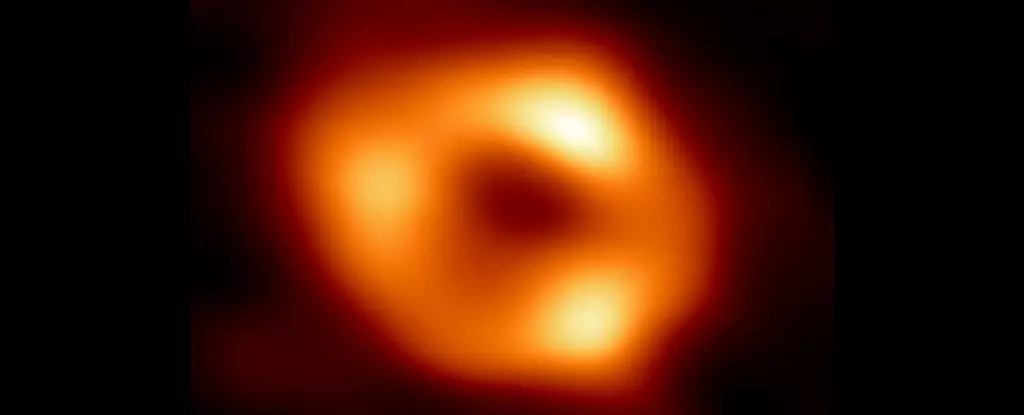The astronomical community was electrified when the Event Horizon Telescope (EHT) consortium unveiled the first image of Sagittarius A* (Sgr A*), the supermassive black hole that resides at the center of our galaxy. This groundbreaking achievement provided a monumental leap toward understanding these enigmatic entities that warp space and time. However, recent analyses conducted by researchers at the National Astronomical Observatory of Japan (NAOJ) have raised questions about the accuracy of this initial depiction. According to NAOJ scientists, the representation of Sgr A* may not be entirely accurate, suggesting that the image could mischaracterize the true shape of the accretion disk surrounding this black hole.
New Methods Yield New Insights
The researchers at NAOJ undertook a fresh analysis of the data initially captured by the EHT using a different set of analytical techniques. The original findings presented Sgr A* with a clearly defined circular ring encasing a dark central area, which scientists deemed a hallmark feature of black hole imagery. However, the NAOJ re-evaluation posits a different narrative; the accretion disk appears to exhibit an elongated profile rather than the expected circular form. This revision could significantly alter our understanding of the dynamics and matter distribution surrounding this supermassive black hole.
Miyoshi Mikato, an astronomer at NAOJ, explained that the revised elongated appearance may stem from certain artifacts present in the imaging process of the EHT. He suggested that the initial analysis may have inadvertently introduced distortions into the interpretation of the data. As with many complex scientific endeavors, errors in data interpretation can lead to fundamentally different conclusions, especially when dealing with the intricate nature of radio interferometry.
The analysis conducted by the NAOJ team reveals that the accretion disk—or the swirling mass of superheated material—surrounding Sgr A* rotates at an astonishing velocity, estimated at about 60 percent of the speed of light. This rapid movement contributes to the disk’s intense luminosity, which primarily manifests in X-rays, visible light, and radio emissions. Such high-energy conditions arise from a combination of magnetic forces and friction within the disk as material spirals toward the black hole.
Multiple variables influence the shape and behavior of the accretion disk, including the spin of the black hole itself, the rate at which material is funneling into the disk, and the angular momentum of that material. Each aspect intricately combines to forge the fascinating yet complex structure of the accretion disk. Moreover, the gravitational distortion caused by the black hole further complicates our ability to capture accurate imagery, posing additional challenges for astronomers.
Miyoshi remarked on the difficulties faced by both the EHT and NAOJ teams, noting that radio interferometry is fraught with inherent complexities. “No telescope can capture an astronomical image perfectly,” he asserted, underlining the inherent challenges of interpreting such convoluted data. As illustrated, both teams derived their distinct representations from the same fundamental dataset, resulting in contrasting interpretations of Sgr A*.
The current dialogue surrounding Sgr A* underscores the vital role of systematic reexamination within the scientific process. The divergence between the initial EHT circular portrayal and the NAOJ’s newly proposed elongated view raises intriguing questions about the state of our knowledge regarding black holes and the accretion processes at play. Moreover, the reinterpretation adds layers of complexity that push forward our understanding of the physical characteristics of supermassive black holes.
The EHT team’s previous imaging of Sgr A*, which produced the iconic 2022 black hole image, is viewed as an essential stepping stone in understanding the cosmic phenomena surrounding these dark entities. The EHT collaboration continues to enhance their techniques to yield better, more detailed images of black holes, which could eventually refine our contemporary understanding, both in terms of structure and behavior.
Ultimately, as advancements in observational technology and data analysis unfold, scientists can look forward to deeper insights into the nature of not only Sgr A* but all black holes scattered throughout the universe. This journey into understanding the hidden dynamics within the murky depths of black holes illustrates the ever-evolving nature of astronomical research, emphasizing the notion that our grasp on these cosmic wonders will continue to shift as new data emerges. The search for clarity in the dark heart of our galaxy is an ongoing pursuit, filled with uncertainties and exciting revelations yet to come.


Leave a Reply